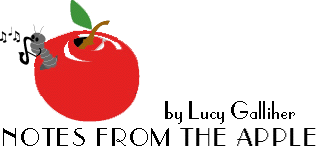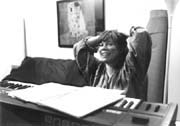

|
 |
Pablo Ziegler Quartet at the Jazz Standard, December 2005 |
This magnificent Argentinean pianist won the Sixth Annual Latin Grammy award for Best Tango Album for his 2003 CD Bajo Cero. The bandmembers at the Jazz Standard consisted of Pablo Ziegler on piano, Claudio Ragazzi on guitar, Pedro Girato on bass (filling in for Pablo Aslan), and Hector del Curto on bandoneon. Each night of his run at the club Pablo featured a special guest. On the night I went tenor saxophonist Harry Allen was featured. On Ziegler's CD, Bajo Cero, the pianist is joined by Quique Sinesi on guitar (a famous Argentinean musician who has performed with the likes of Paquito D'Rivera and Enrico Rava) and Walter Castro, a virtuoso bandoeonist who has played with the group since 1995. In the live performance at the Jazz Standard, Claudio Ragazzi was the guitarist, replacing Sinesi and, incidentally, was the only North American in the group--Claudio hails from Boston. The music was lively and fun, and it was a pleasure to listen to the way the guitar and bandoneon soloed with zest and verve. The similarity between the accordion and the bandoneon is very strong. At one time the accordion was a dominant force in American pop music. Before the electric piano became used widely in the sixties and seventies, the accordion was the portable instrument of the day. The bandoneon continues this tradition in tango music, where it has always been an integral component. Ziegler is best known for his work with Astor Piazzolla's New Tango Quintet in the seventies and eighties and plays classical music as well as Jazz and tango. At the Jazz Standard, he played a number of cuts from the CD, as well as the title tune, Bajo Cero. There was one called "La Fundicion," an ominous-sounding piece which Ziegler said was named from a metal factory and another translated as "Milonga in the Wind," where the young bassist was featured on arco. The composer/arranger/pianist writes songs that are rhythmically complicated and which, upon repeated listening, will linger in your head. "Chin Chin" is a fast tango with lots of sixteenth notes and goes into a romantic, introspective section. "Bajo Cero" (which means "Below Zero") featured a beautiful solo on piano by Ziegler. He used no music, but the rest of the musicians were reading scores, as the music is very challenging. In addition to the usual way of playing, all kinds of percussive sounds were added. The musicians made these sounds by tapping on their instruments, hitting the strings, and so forth. Pablo Ziegler is not afraid to play in a variety of musical styles. In addition to his current groups, he has performed with vibraphonist Gary Burton and collaborated on albums with Emanuel Ax and the Orpheus Chamber Orchestra, which showcase Piazzolla's music. He has a wonderful wealth of musical knowledge, and the band members showed their respect by watching his every move. It was great to hear Ziegler live. |
| by Lucy Galliher |
Back to ![]() Contents Page
Contents Page
Jazz Now Interactive
Copyright Jazz Now, February 2006 edition, all rights reserved
jazznow@sbcglobal.net